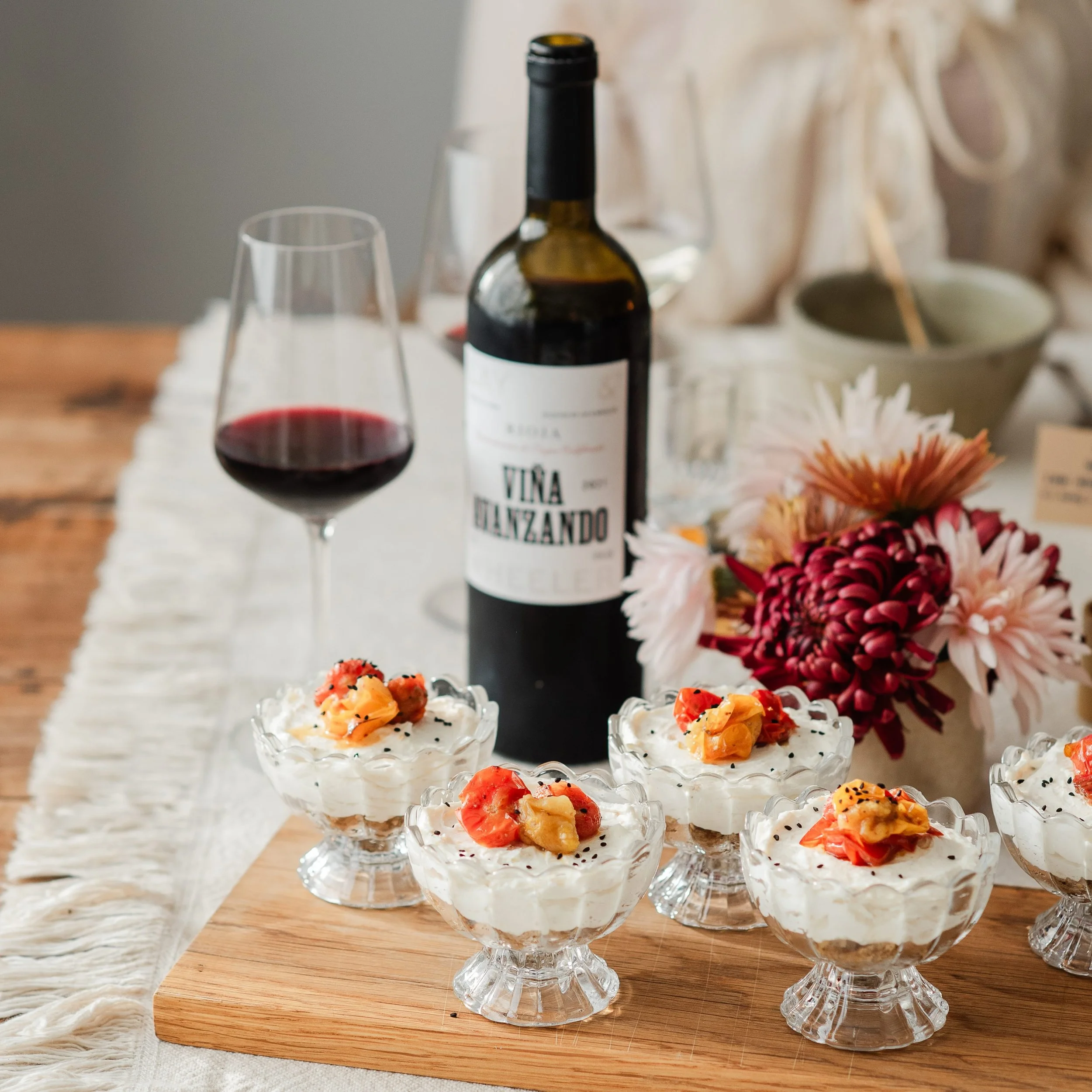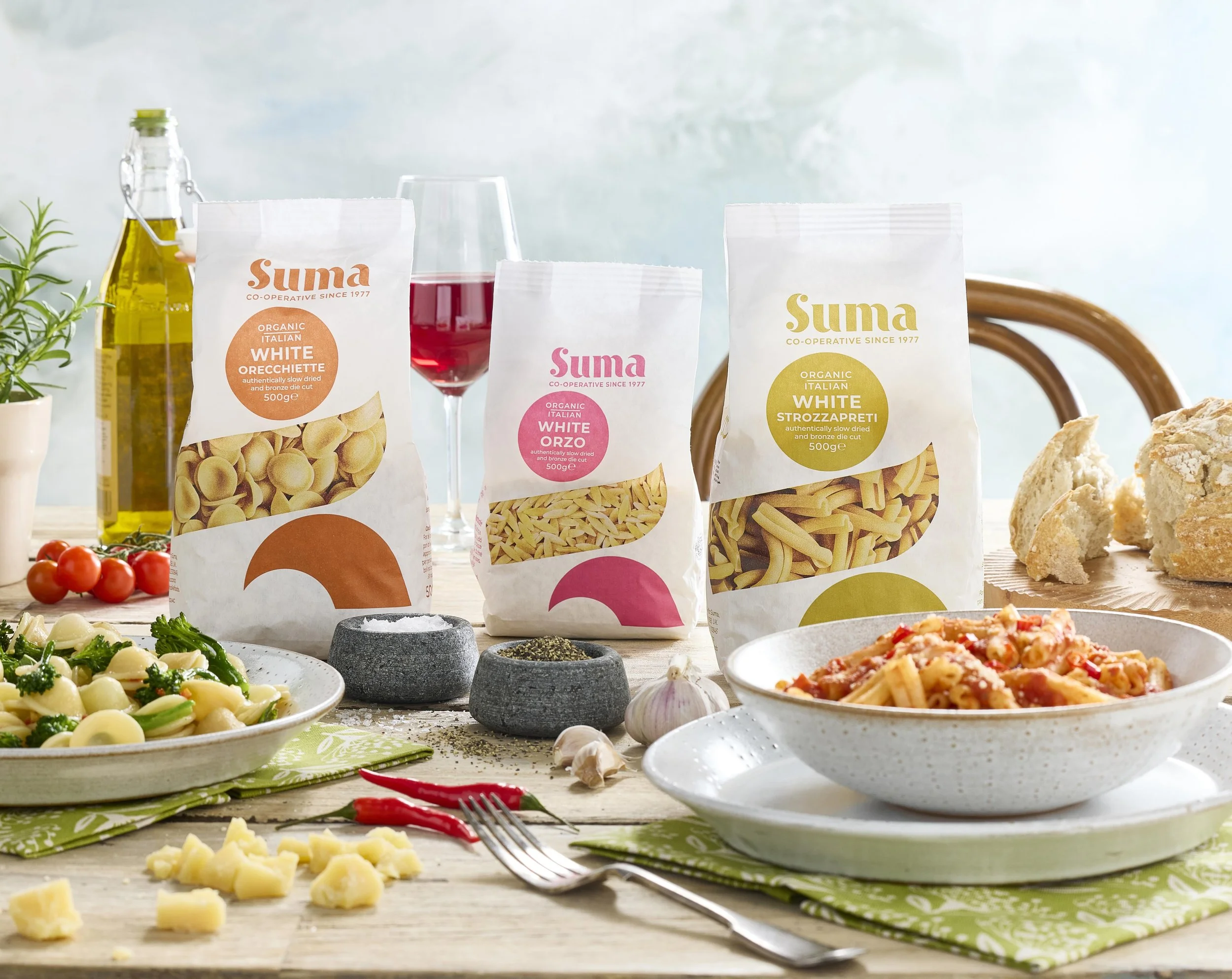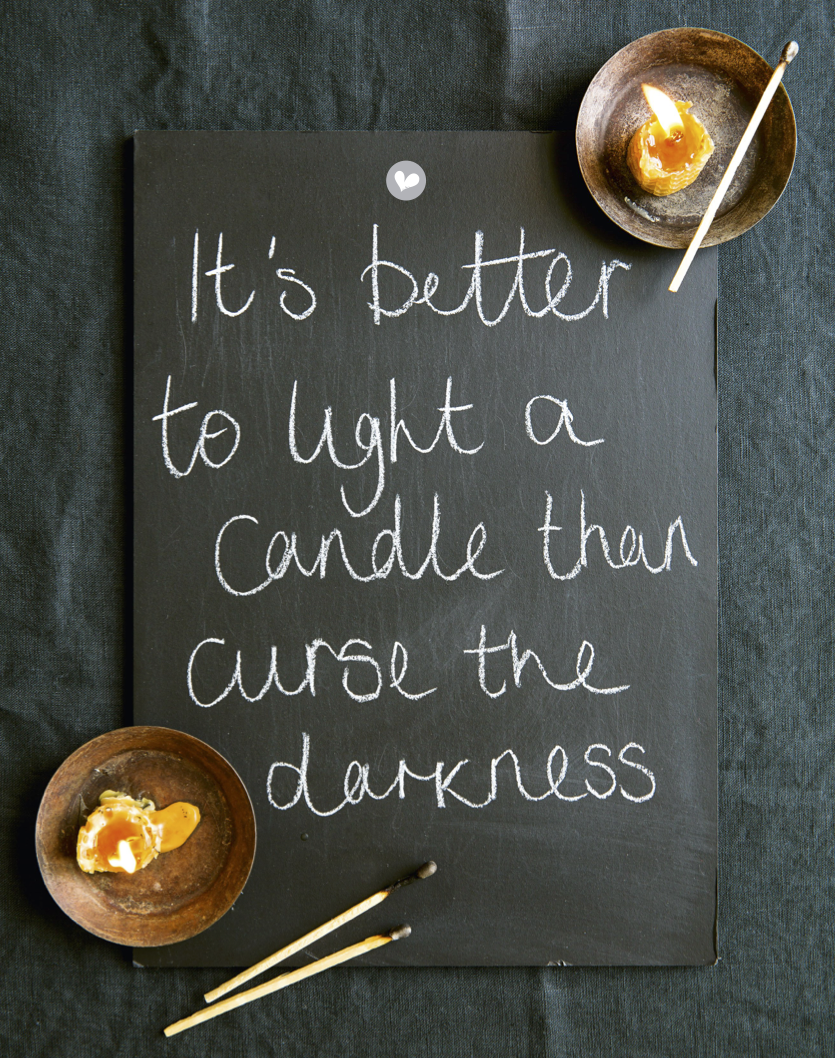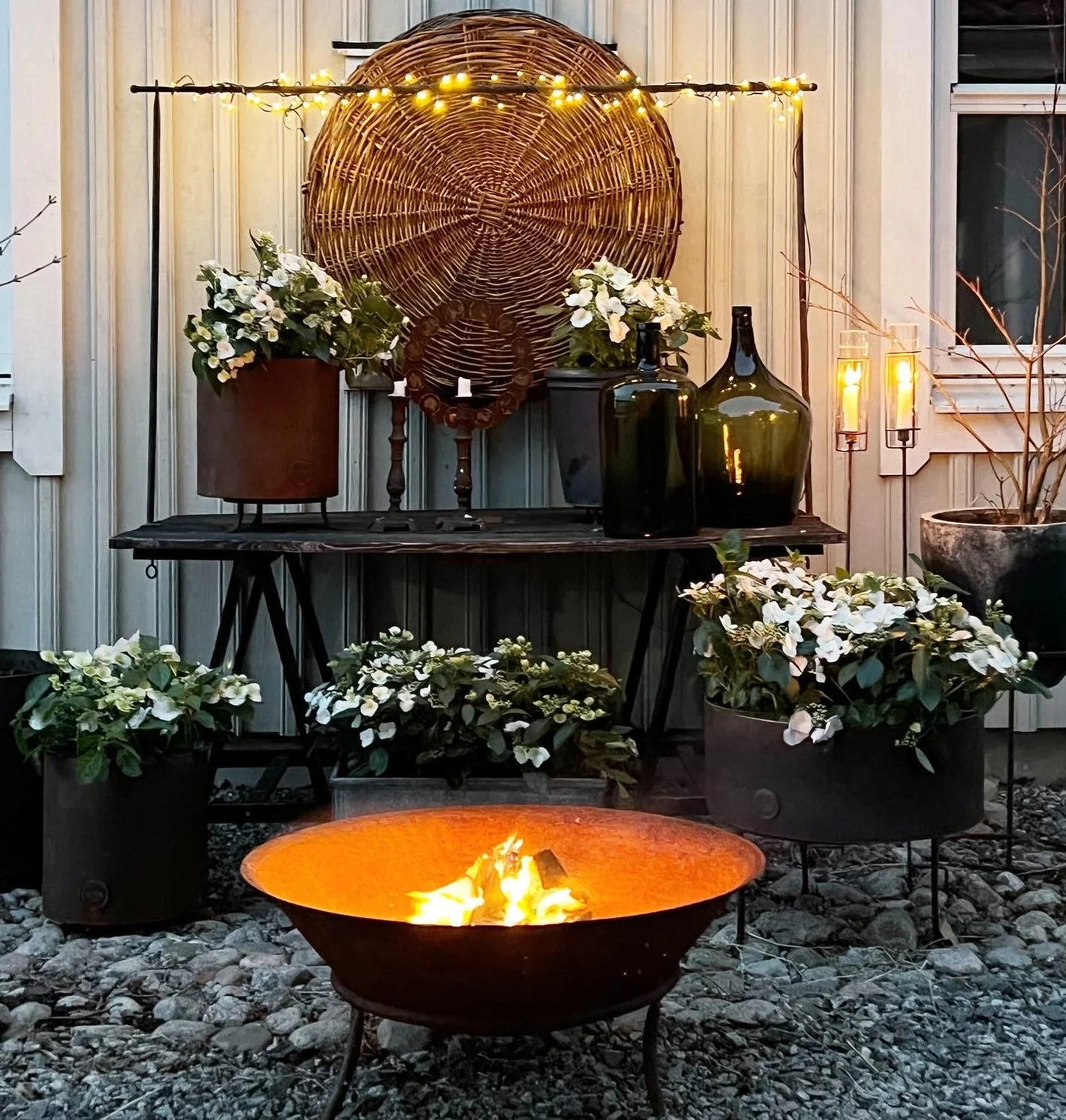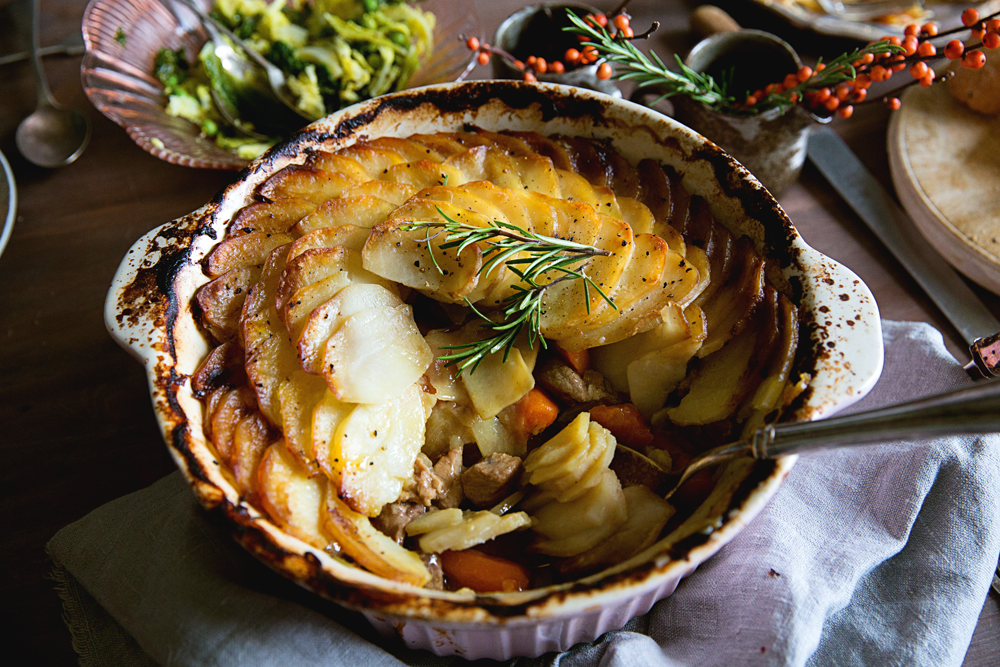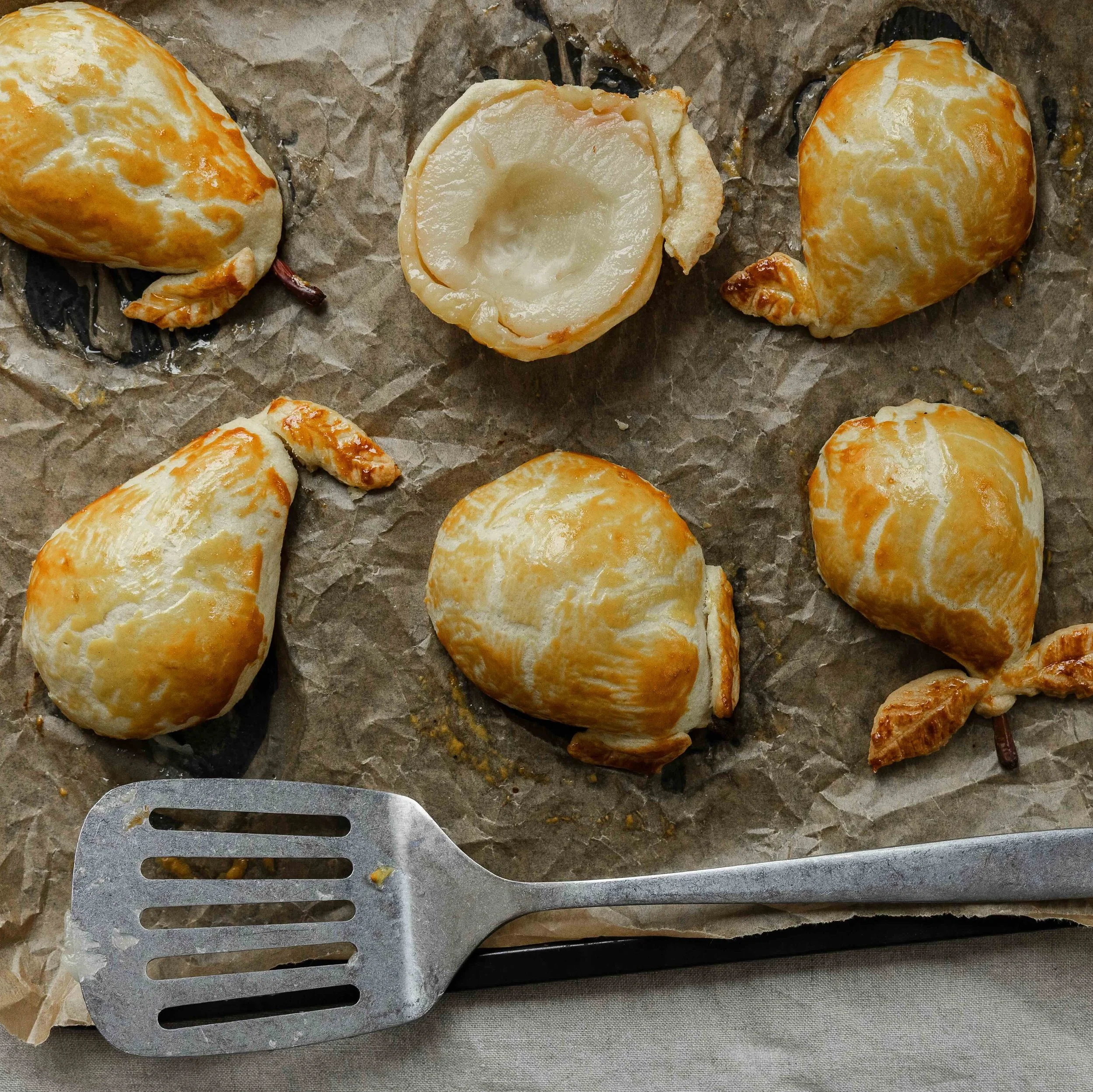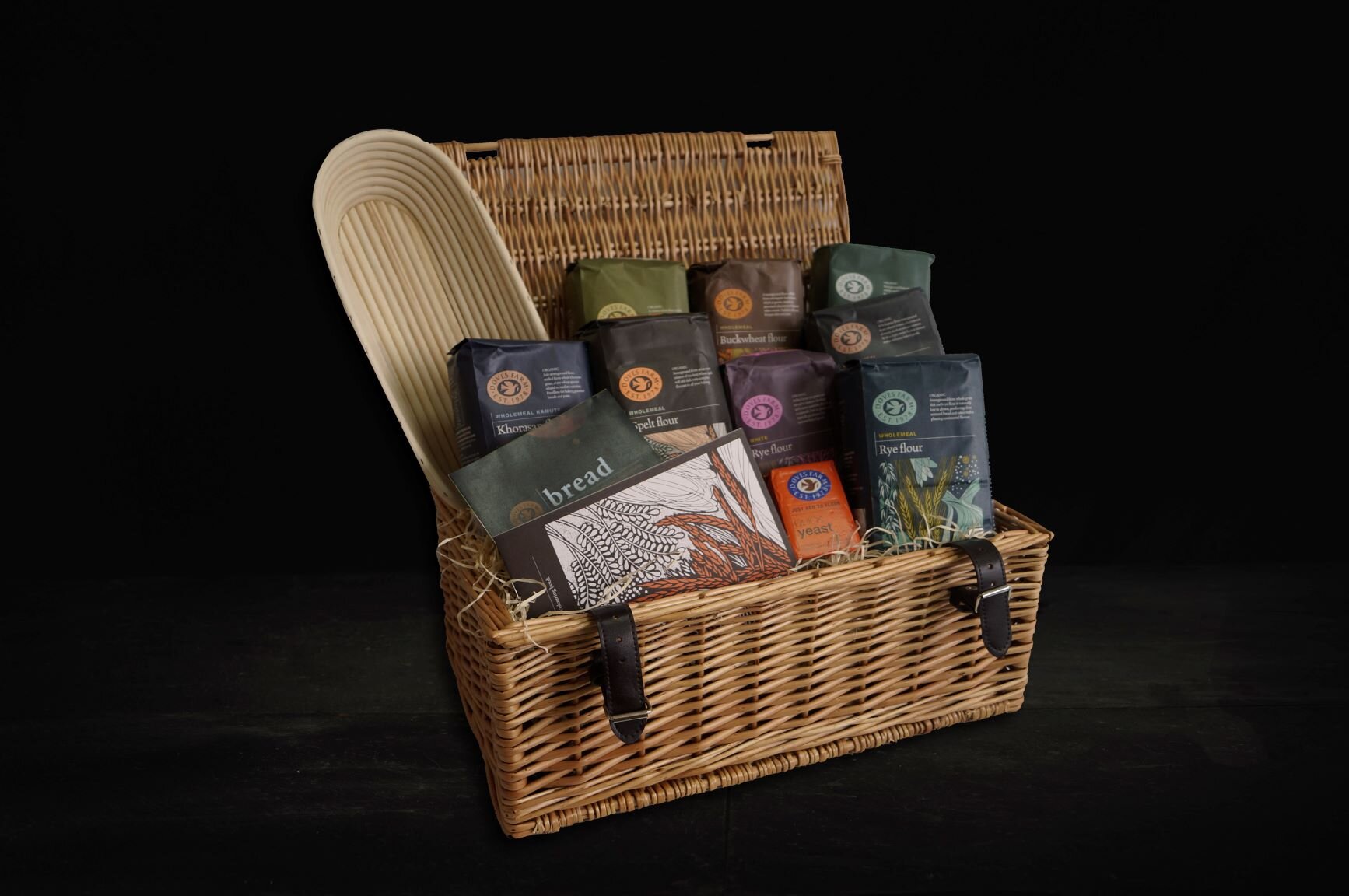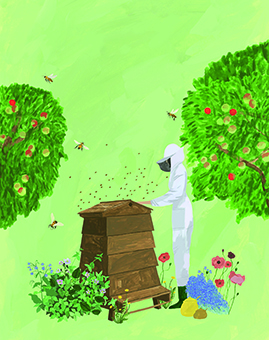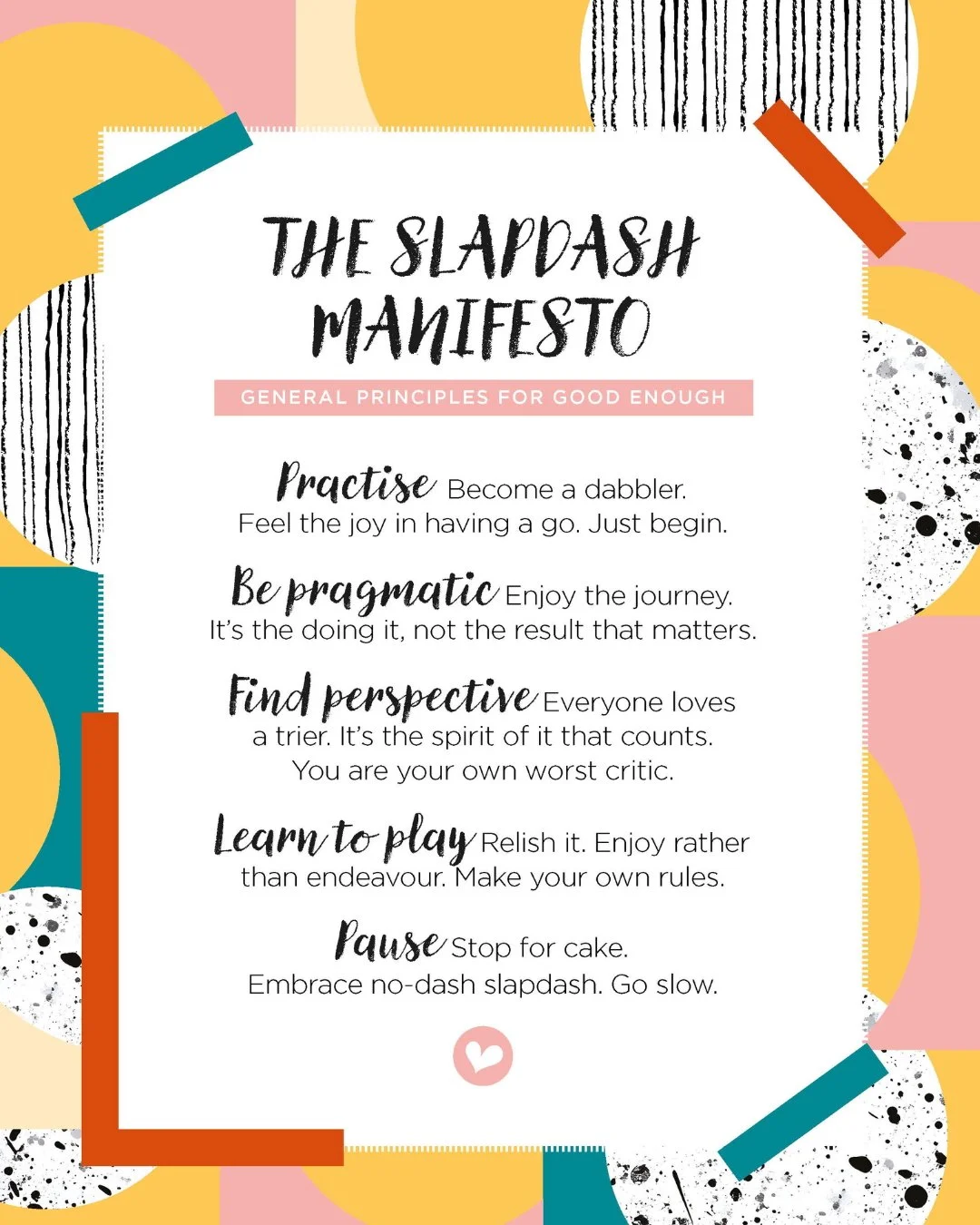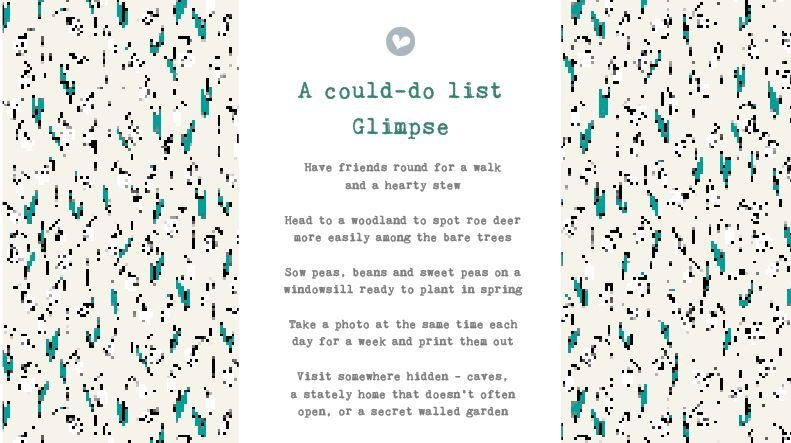Our October playlist is compiled by Daniel Gray, author of Sunday Best: Travels through the day of rest.
These are songs that sum up the spirit of a Sunday. Have a listen on Spotify here.
You can see some of Daniel’s ‘Sunday best’ outing suggestions in HUG, the October 2025 issue of The Simple Things magazine.
Playlist | Night-walking
DJ: Dan Richards
Image: Vanessa Grzywacz
In our October WEAVE issue, Dan Richards takes us along on a night walk through Wigtown. He’s shared a taster of his soundtrack with us: you can take a listen here.
Playlist | Colours
Embrace a rainbow of colours with our October playlist. Take a listen on Spotify here.
We publish a playlist every month: you can browse through them all here.
Our October issue, SEED, is on sale from 27 October. Visit picsandink.com to order a copy, or pick one up in your local shop.
David Grant-Suttie
Pumpkin varieties | What are they gourd for?
Perplexed by the plethora of pumpkins now available? Don’t have a pumpkin panic. Here’s our gourd guide to what to do with which types of pumpkins, gourds and squash
Squash ‘Crown Prince’
This blue-hued variety, which has the look of a crown has a velvety texture and a good flavour that’s excellent for soup.
Pumpkin ‘Black Futsu’
Beautifully shaped, with ‘segments’ that cut pleasingly into wedges, this variety has a treacly taste when it’s roasted. Pop the chunks in the oven with olive oil, herbs and spices, or even a little honey for extra ‘stick’ and serve as an alternative to potato wedges. Great with sausages.
‘Munchkin’ Pumpkins
Very cute and ideal for autumnal displays, these also make a very cute teatime treat. Cut the tops off, scoop out the seeds, fill the cavity with anything tasty from the fridge – chorizo, grated cheese, nuts, onions etc – and bake in the oven for 30-40 minutes before eating with a spoon like a boiked egg.
Onion squash
Named for their oniony shape, rather than flavour, these are great at taking on flavour and go beautifully with rosemary and garlic. Slice into wedges, roast on a bed of rosemary, with garlic cloves scattered around, and serve with couscous and halloumi or grilled lamb or chicken and plenty of herbs and spices.
Gem squash
Deep green, small and round, there are not to be confused with a round courgette. They’re great in soup but their size makes them ideal for roasting whole, stuffed with grains, veggies and herbs and spices.
Spaghetti squash
This large squash turns into fabulous, tender strings when cooked. Just cute the large, yellow squash in half lengthways. Pop a couple of knobs of butter in the middle of each half and roast until a fork goes into it easily. Gently ‘fork up’ the strands of squash, season with olive oil and parmesan and eat like spaghetti – or use the strands in place of pasta sheets in a lasagne.
Butternut squash
You might be a fan of butternut squash in rissotos or pasta but its naturally sweet flavour and smooth texture when pureed makes it an excellent choice for a good old American style pumpkin pie.
Goosebump pumpkins
Bright orange, warty, and slightly scary looking, goosebump pumpkins are delicious but the best variety for carving into terrifying faces and letting their warty flesh sing out.
We were inspired to find out more about pumpkins after we read our My Plot feature from our November issue, in which we met gourd guru David Grant-Suttie, owner of a thriving pumpkin patch at The Balgone Estate in North Berwick. Visit balgoneestate.co.uk to find out more, and pick up our November issue to meet David and his pumpkins.
Buy this month's The Simple Things - buy, download or subscribe
More from our blog…
More things to do with pumpkins…
It's better to light a candle than curse the darkness
A thought to mark the winter solstice. We first published this chalkboard in our October 2018 issue and somehow it feels even more pertinent today. Yule is traditionally a time to both embrace darkness and celebrate the return of the light, so we’re hunkering down with a candle tonight, enjoying the dark and the quiet and looking forward to spring, too.
Merry Yule! May the light burn brightly for you.
Buy this month's The Simple Things - buy, download or subscribe
More from our December issue…
More midwinter magic…
Photography: Mowie Kay
Seven of our favourite card games
Join our card school and learn to play a few traditional games
When the evenings draw in and there’s a chill in the air, it’s the ideal time to dust off a pack of cards and cosy up for the evening. Whether you’re a green visors and whiskies card shark or more of a cup of tea and a quick hand of rummy before bed type, we hope you enjoy learning some of our favourite games.
Black Jack (Brit style)*
BASICS: 4-6 players; 52-card deck. Each player gets seven cards. Remaining cards are placed face down as stock with top card turned over as the starter. First player lays a card on the starter, which must match in either suit or rank, or draws a card from stock. The player continues laying cards in sequence until they can’t go or they lay an action card.
ACTION CARDS:
Two: next player picks up two cards, unless they can play a Two and make the next player pick up four.
Eight: next player misses turn.
Black Jack: next player picks up five cards. A second Black Jack makes the next player pick up ten. Red Jack cancels.
Queen: follow with a card of any suit.
King: reverses play order.
The first person to shed all their cards wins. However, when a player can win on their next go, they must call ‘last cards’ or have to draw a card.
*It’s different to the US gambling game ‘Blackjack’.
Eights
A game best played with two people, also known as Crazy Eights or Swedish Rummy
BASICS: 2–7 players; 52-card deck
Each player receives 5 cards (with two players, each receives 7 cards). Remaining cards are placed face down as the stock, with top card turned up as the starter. First player lays one card on the starter, which must match in either suit or rank. If unable to do this, the player must draw a card from the stock. When the stock is exhausted, a player unable to play must pass.
Eights are wild and can be played on any card, regardless of its suit or rank, with the player specifying its suit. Play ends when any player lays his last card. He scores the total of cards remaining in all other hands: Eights score
50, aces 1, face cards 10, the index value for all others. With two players, the first to reach 100 points wins.
Knockout whist
The classic family favourite. Sniggering at the word ‘trumps’ never gets old.
BASICS: 2–7 players; 52 card deck; Ace is high
Seven cards are dealt to each player. The next card is turned up and becomes the trump suit. The player to the left of the dealer places the first card. Each player must follow the suit led, if possible. If not, play any other card, including a trump card. The highest trump wins the trick or, if no trumps are played, the highest card of the suit led. The winner leads the next trick.
Once all cards are played, players without any tricks are eliminated. The player with the most tricks picks trumps for the next hand; if two people have the same amount of tricks, cut cards to decide. The number of cards dealt decreases by one each hand, until only one player – the ultimate winner – remains.
Ninety-Nine
BASICS: 2 or more players; 52-card deck; you’ll need chips or counters.
Each player is given three counters and dealt three cards.
To play, place one card face up in the centre of the table, calling out the total value of the face-up pile before drawing the top card from the stock. Each card adds its face value in points. Jacks and Queens count as 10.
The following cards have additional effects:
3: skips next player
4: no value, reverses play
9: value of 99
10: adds or subtracts ten from the total
King: no value
Ace: value of one or 11.
If the player cannot place a card without taking the value of the pile over 99, the round ends and they lose one counter.
The winner is the last person left with counters.
Oh Hell!
A trick-taking game, beloved by Bill Clinton and Steven Spielberg, in which the object is to take exactly the number of tricks bid
BASICS: 3-7 players; 52 card deck; Ace is high
Each player is dealt a hand. There are many variations but typically, with
3–5 players, 10 cards each; 6 players, 8 cards each; 7 players, 7 cards each.
Each successive hand is played with one card fewer. After dealing, the next card is turned up and becomes the trump suit. Each player now bids for the number of tricks he thinks he can win. The player to the left of the dealer starts. Each player must follow the suit led, if possible. If not, play any other card, including trump. The highest card of the led suit wins the trick unless ruffed, when the highest trump wins. A player who wins the exact number of tricks bid scores 10 plus the number of tricks bid.
Klondike Solitaire
BASICS: 1–4 players; 52-card deck
One of the most popular versions of Solitaire, Klondike is typically a solo game, but it can be played as a group activity where everyone works together to solve the same shuffle. Players sort cards into foundation piles from Ace to King by suit, while organizing cards into descending order with alternating colors in the tableau.
Klondike is perfect for those looking to relax or sharpen their strategic thinking, either individually or as a team. You can try Klondike Solitaire here and even compete to see who can solve it fastest.
Red Dog
Beat the top card of the pack by having a higher ranking card of the same suit.
Basics: 2–10 players; 52-card deck; Ace is high; you’ll need chips or counters.
Five cards dealt to each player face down (four if more than eight play). Players put up one or any number of agreed chips to make the pool. First player can bet one chip or up to the number in the pool (‘betting the pot’). The dealer turns the top card of the pack. If the player can show a higher card in the same suit he wins back his bet and the pool. If he can’t he adds his chips to the pool, discards his hand and it’s the next player’s go. You can forfeit a hand by adding a chip to the pot and discarding your cards. When there are no chips in the pot, each player adds more and play continues.
More fun and games…
More ways to stay cosy at home…
Photography, recipes & styling: CATHERINE FRAWLEY
Recipe | Lamb hotpot and mustardy greens
Gather friends and family for an afternoon walk, then come home to hotpot and slow-cooked comfort food. The traditional Lancashire hotpot, originally made with mutton, makes a virtue of simplicity
Lamb hotpot
A hearty casserole that deserves its place as a classic
Serves 6–8
2 tbsp plain flour
900g diced lamb
2 tbsp vegetable oil
2 large onions, sliced
1 large garlic bulb, cloves peeled and left whole
8 small shallots, peeled
500g Chantenay carrots, scrubbed
1 tbsp Dijon mustard
1 tsp chopped fresh rosemary, plus extra to garnish
500ml chicken or vegetable stock
750g Maris Piper potatoes, unpeeled, scrubbed and cut into 5mm slices
40g butter, melted
1 Tip the flour into a bowl, and season with a few pinches of sea salt and a good grinding of black pepper. Add the lamb and toss to coat in the flour. Heat half the oil in a large ovenproof casserole dish and add the lamb (you may need to do this in two batches). Cook for 5–6 mins, until brown all over, then transfer to a plate with a slotted spoon and set aside.
2 Add the remaining oil to the same casserole dish and gently fry the onions for around 5 mins, until translucent. Add the garlic cloves and cook for a further minute before adding the shallots and carrots. Cook, stirring, for a further 2–3 mins.
3 Return the lamb to the casserole dish, and add the mustard and chopped rosemary. Season and stir well, before stirring through the stock.
4 Preheat oven to 180C/Fan 160C/ 350F. Arrange the potato slices on top of the lamb, overlapping slightly to create a lid for the hotpot. Brush with the melted butter, season with salt and black pepper, and cover with a lid or foil. Bake for 11⁄2 hours.
5 Remove the lid or foil, turn up the oven to 200C/Fan 180C/400F, and cook for a further 30–40 mins, or until the potatoes are golden brown. Garnish with rosemary sprigs.
Mustardy greens
A tangy mustard dressing is a punchy match for cabbage
Serves 4
200g savoy cabbage, shredded
200g curly kale
200g frozen peas
25g butter
2 tbsp wholegrain mustard
1 tbsp Dijon mustard
1 Cook the vegetables in a pan of boiling salted water for about 4 mins, or until just tender.
2 Drain the vegetables well. Return the pan to a low heat and gently melt together the butter and mustards. Return the vegetables to the pan, season and serve immediately.
Buy this month's The Simple Things - buy, download or subscribe
From our November issue:
More autumn recipes:
Halloween | Simple spells
It’s Halloween. Why not try a little magic?*
When you’re in the shower, visualise the water removing any anxieties and worries from the day before.
If you’re feeling unwell, make a soup and while stirring it chant, “Cold, flu and ills be gone, healthy body from now on.”
Make a love oil. Blend 5 drops each of rose and lavender oil and 120ml carrier oil. Shake the jar and focus on the intent of the oil (to bring love or friendship, say).
Be a positive force. Help others, act with love, cut the gossip and try not to judge.
*Adapted from The Good Witch's Guide by Shawn Robbins and Charity Bedell (Sterling)
More Halloween activities…
From our November issue…
Soul cakes recipe by Lia Leendertz
Photography by Kirstie Young
Recipe: Soul cakes
Soul cakes are an old English traditional cake, sometimes known simply as ‘souls’. The tradition of giving out soul cakes on All Hallows’ Eve dates back to the Middle Ages, when children went door-to-door saying prayers for the dead On All Hallows’ Eve, All Saints’ Day and All Souls’ Day, children went ‘souling’, asking for soul cakes from house to house: quite possibly a precursor to trick or treating. This recipe is adapted from one on lavenderandlovage.com.
Soul cakes
Makes 12–15 cakes
175g butter
175g caster sugar
3 egg yolks
450g plain flour
2 teaspoons mixed spice
100g currants
a little milk to mix
1 Pre-heat the oven to 190C/Fan 170/375F. Cream the butter with the sugar until it’s light and fluffy and then beat in the egg yolks one at a time.
2 In a separate bowl, sieve the flour and the spices together and add to the wet mixture along with the currants (reserving a small handful to decorate the tops later).
3 Mix with a wooden spoon and then add some milk to pull everything together into a dough.
4 Roll out to a thickness of around 1cm and cut out rounds with a biscuit cutter. Use a straight-sided knife to make a slight cross indent in the top of each cake and then push in raisins along it.
5 Place on a piece of baking parchment on a baking tray and bake for 10 to 15 mins on the fire or in the oven until golden. Allow to cool before eating.
Get hold of your copy of this month's The Simple Things - buy, download or subscribe
More All Hallows Even celebrations…
From our November issue…
DJ: Frances Ambler. Illustration: Anneliese Klos
Playlist | Songs about creativity
Pick up a pen, pick up a paintbrush. Listen at thesimplethings.com/blog/creativityplaylist
Get hold of your copy of this month's The Simple Things - buy, download or subscribe
More of our playlists…
More from our September issue…
Christmas gift subscription offer
Christmas gift subscription offer from The Simple Things magazine. Treat friends and family to a gift subscription this Christmas and we'll do the wrapping and sending for you. Just £44 – saving 26%* on the usual cover price.
Read MorePhotograph: Getty Images
Halloween | Five great ghouls
We love scary stories, especially in the chill nights of autumn. From Frankenstein to Freddy Krueger, monsters are enduringly fascinating. It seems we can’t get enough of scaring ourselves silly. Here are five great ghouls
DRACULA
The vampire as seductive killer has become one of horror’s (and, latterly, romance’s) staples. These days Dracula is often reduced to a campy stereotype, but bloodsucking parasites are constantly reinvented for their age – as in Justin Cronin’s saga The Passage, where virus- carrying vampires ravage a post- apocalyptic wasteland.
FRANKENSTEIN’S MONSTER
Another figure more often seen in pastiche, the monster is a tragic figure, man’s hubris made real and deadly. In an age when science is once again taking over what was once seen as ‘God’s work’ (with cloning, genetic modification, etc) it’s no surprise this idea sees multiple revivals on TV, film and stage.
FREDDY KRUEGER
Razor-clawed, pizza-faced Freddy has been sanitised into a clownish Halloween costume over the years (people often forget he started out as a child killer), but his unforgettable look, plus his ability to enter our very dreams and prey on our subconscious fears, make him one of cinema’s great monsters.
HANNIBAL LECTER
Most famously played by Anthony Hopkins, and recently reinvented by Mads Mikkelsen in the blood-soaked TV series Hannibal, this suave, cunning and ruthless cannibal set the template for the sophisticated serial killer, able to charm his victims – and captors – despite being guilty of the most horrible crimes.
THE ARMITAGES
Easygoing and friendly, the urbane, intellectual family in Get Out welcome their daughter’s black boyfriend into their home – but when their sinister reasons become apparent, the terror begins. They could be your neighbours, your friends, and you wouldn’t ever know...
More from the October issue:
More Halloween:
Nest | Kangaroo paw
Kangaroo paw, also known as Anigozanthos, is native to Australia and has a paw-like structure, hence the name. It’s now available in shades of silver and pale pink though it’s best known in its fiery colours of ochre, amber, red and rust.
The flowers work well in a mixed arrangement due to their stiff structure. Kangaroo paw is also good in mini bouquet-style buttonholes as its native climate means it can last all day without water.
Photography and flowers: Ellie Marlow, Catkin & Pussywillow, Winchester railway station (catkinandpussywillow.com)
More from the October issue:
More plants:
Illustration: Rachel Grant
Know a thing or two... Trees and druid traditions
Druids revere the natural world above all else. Trees, particularly oaks (‘Druid’ is thought to have meant ‘knowledge of the oak’), are considered sacred, and meetings are held in forest groves.
Druids believe in the interconnectedness of all life and in an afterlife. Some of their traditional beliefs and rituals are still around in altered forms:
The Yule Log
Druids believed that the sun stood still for 12 days at midwinter, and so they burnt a log throughout this period to banish the darkness and to keep evil spirits at bay.
Mistletoe
The cream berries of the mistletoe in the depths of winter were seen as a symbol of life. Pliny the Elder records a moonlit ceremony in which a priest would cut the bough of mistletoe with a golden sickle, and catch it in a white cloak.
Wassailing
This Twelfth Night tradition has Celtic roots and is upheld in druidry, offering a gift of cider and baked apples to fruit trees to ensure the coming year’s bountiful harvest (see issue 67).
Turn to page 85 of October's The Simple Things for more of our arboreal lore and legend feature including secrets of our autumn woodlands and nine native British trees.
More from the October issue:
Know a thing or two:
Happy talk
Using more positive language can make a big difference to your life, reawakening your confidence and boosting your happiness
Say positive things at every opportunity. Say thank you; give praise, pay compliments.
Focus on your strengths and write three affirmations that begin “I am...” They needn’t be true (yet).
Monitor your speech over a day. Note the patterns you fall into and start rephrasing.
Try some simple switches:
I’m hopeless at... I’m learning to
It’s impossible... It’s a real challenge No problem... You’re welcome
I messed up... I can do better
I’m stressed... I have a lot on
More on using positive language on page 76 of October’s The Simple Things.
More from the October issue:
More food for your mind:
Photography: Tony Briscoe
Recipe | Portugese custard tarts (Pastéis de nata)
Easy to make and beyond delicious, these little delights are great for breakfast, elevenses, afternoon tea – or any time of day at all, really
Portugese custard tarts (Pastéis de nata)
Makes 12
Butter, for greasing
110g caster sugar
2 tbsp cornflour
3 egg yolks
225ml double cream
175ml milk
2 tsp vanilla extract
1 sheet of ready-rolled all-butter puff pastry
Ground cinnamon, for dusting
Icing sugar, for dusting
1 Grease a 12-hole muffin tin (unless using a non-stick tin). In a saucepan, mix together the caster sugar, cornflour and egg yolks. Gradually add the cream and milk, whisking until smoothish. Don’t worry about lumps – they will whisk out.
2 Stir over a medium heat until the mixture becomes very thick and, just before it comes to the boil, stop whisking, remove from heat, stir in vanilla extract and tip into a bowl.
3 Cover with cling film directly on the custard to prevent a skin forming. Leave to cool.
4 Preheat oven to 200C/Fan 180C/Gas 6. Unroll the pastry with the long edge closest to you (landscape format), dust with a little cinnamon and cut in half vertically. Put one piece on top of the other and, starting from the bottom (shortest) edge, tightly roll up the pastry pieces into a sausage shape.
5 Slice into 12 evenly sized discs. Use a rolling pin or your fingers to flatten out the discs into thin circles. Press into a muffin tin and spoon in the cold custard.
6 Bake in the preheated oven for 20–25 mins until the pastry is golden and the custard is puffed up, bubbling and golden in parts. Leave to cool in the tin for 10 mins (they will shrink down as they cool) before removing. Caramelise the tops with a cook’s blowtorch if they’re not as browned as you’d like. Sometimes they are, sometimes they’re not!
7 Serve either warm or at room temperature with a last-minute dusting of icing sugar and ground cinnamon.
Cook’s note: Get ahead by making the custard (in steps 1, 2 and 3) up to three days ahead and keeping in the fridge. You can prepare as far as the end of step 5 any time on the day of baking. The tarts can also be baked several days ahead and eaten warmed through or simply served at room temperature.
Recipe from The Get-Ahead Cook by Jane Lovett (Apicius Publishing)
Cake in the House is our monthly recipe feature - get a cake recipe every month in The Simple Things!
More from the October issue:
More Cake in the House recipes:
Five black plants
Don’t be afraid of the dark: adding a touch of gothic horror to your garden can be smart, dramatic and not at all spooky
THE NEW BLACK FIVE FAVOURITE PLANTS
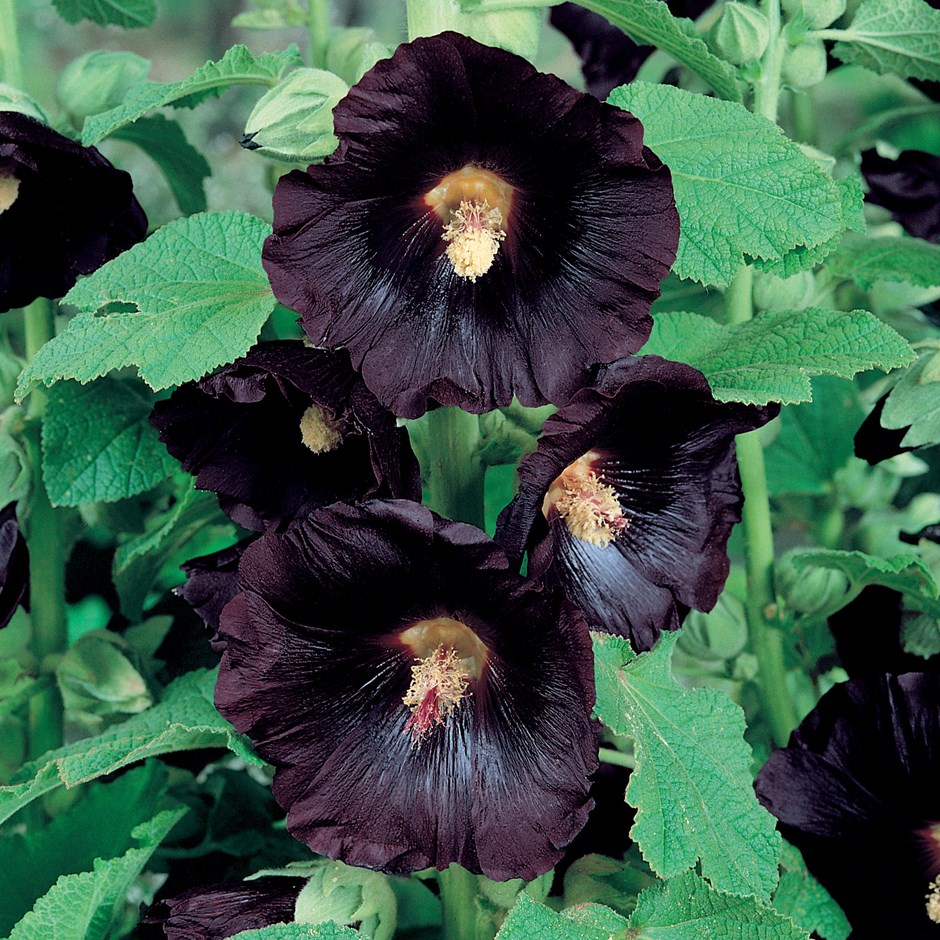

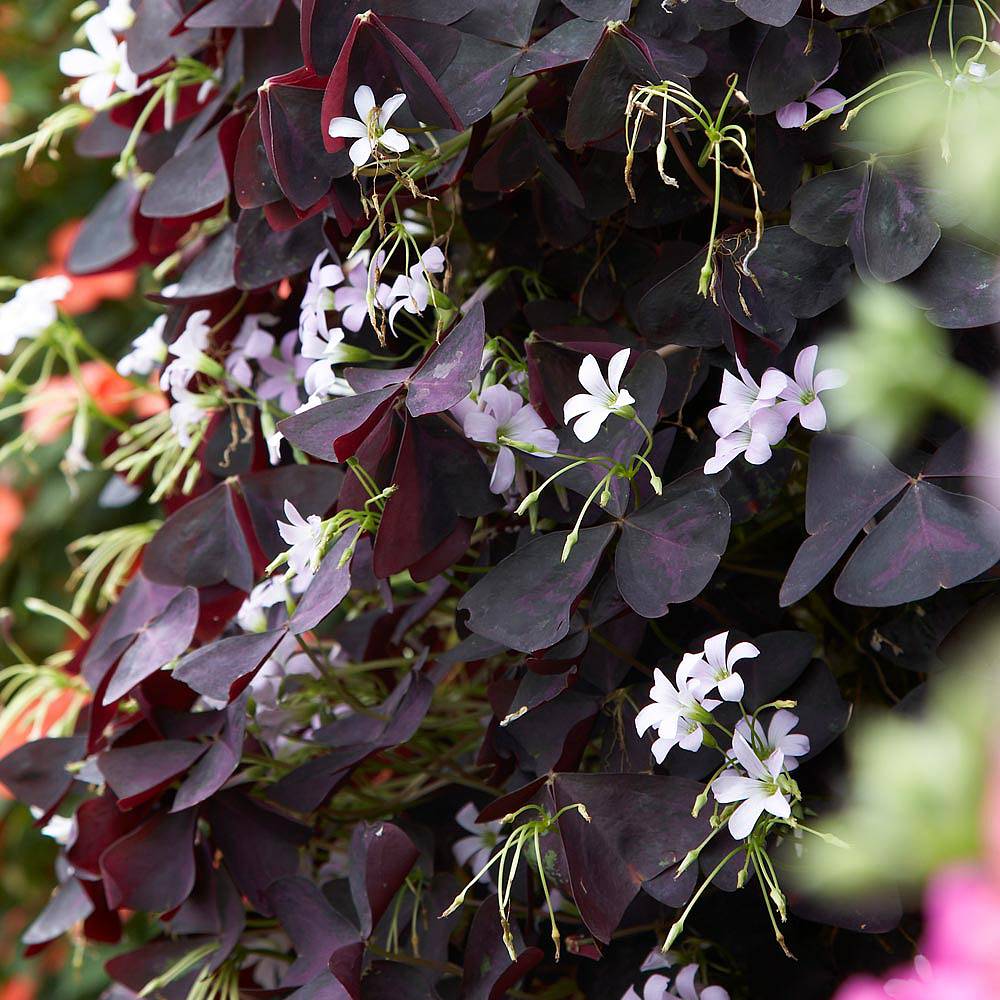
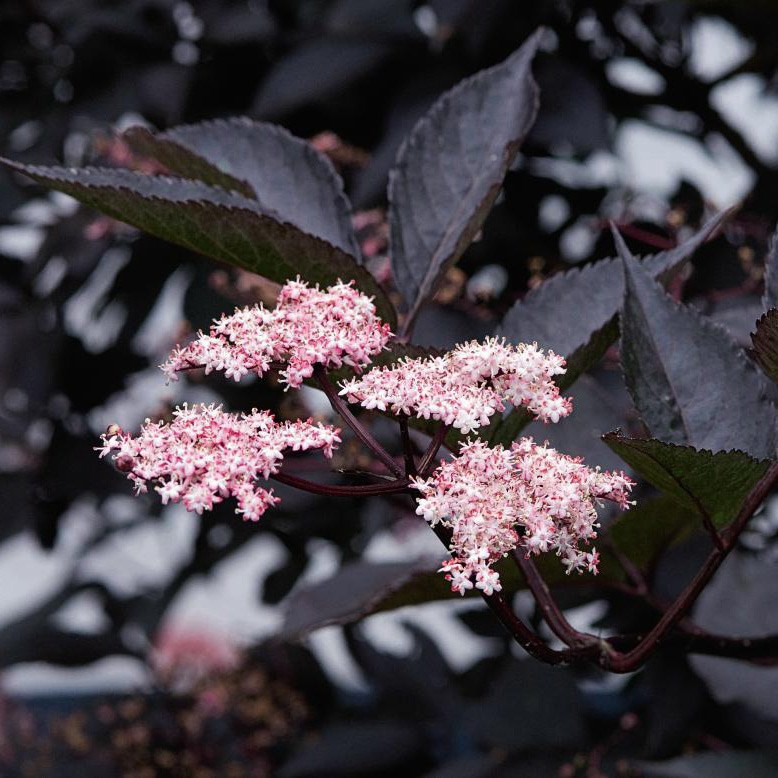
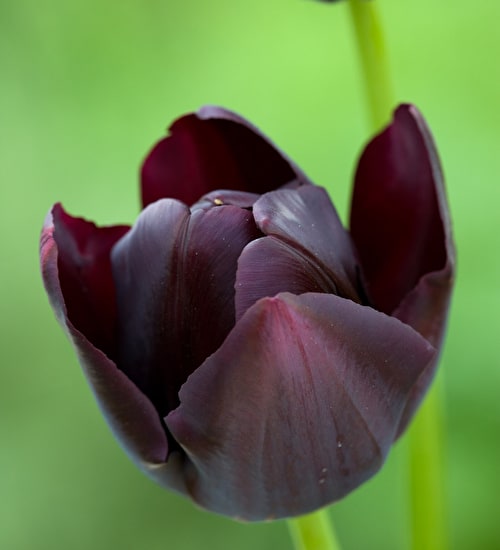
Turn to page 113 of October’s The Simple Things for more black gardens.
More from the September issue:
More plants:
Photograph: Jo Emmerson
Positive News from around the world | Balancing the books
When she realised that collections of rare literary works are dominated by male authors, AN Devers set about redressing the balance
"They are as close to perfect objects as exist in the world," smiles AN Devers, describing her favourite subject - books. Five years ago, she was working as an arts journalist in New York City when occasionally buying a signed first edition by a favourite writer turned into a more serious habit. Devers started going to rare book fairs and quickly noticed a price discrepancy in modern first editions by men, and those written by women.
“I knew that the rare book world was considered rather old-fashioned, but I hadn’t realised there were so few women book collectors or dealers compared to the number of men who sell and collect," she says.
Not long after, Devers was struck by the idea for The Second Shelf: a rare book business focused on books by and about women. The collector trade is part of a supply chain, she explains, one that leads to readers’ bookshelves, universities, archives and libraries. Historically dominated by white, Western ‘bookmen’, women – particularly women of colour – have simply been deemed less collectable.
“I put it down to the gender bias that plagues nearly all fields,” she says. “Women’s contributions are typically undervalued across all areas of our life and professional experience.”
The only book she has given herself permission to keep “that I could – and should – sell” is a first edition of Sylvia Plath’s The Bell Jar. Written under the pseudonym of Victoria Lucas, it’s a work that Devers calls “tremendous and underrated”.
Earlier this year, Devers also launched a Kickstarter crowdfunding campaign. It was a way to communicate the gender imbalance issue and also to raise funds for her burgeoning business. She used the proceeds – 608 backers pledged £32,000 – to launch an online book shop. And she now also prints a quarterly publication: a magazine and rare book catalogue hybrid for people who share her passion.
AN Devers and some of her favourite books at Second Shelf (thesecondshelf.com).
Turn to page 52 of October’s The Simple Things for more articles written by our friends at Positive News, the magazine for good journalism about good things. See the world from a different angle; positive.news/subscribe.
More to make you happy:
More could-do lists:
Illustration: Kavel Rafferty
Stories behind superstitions | The wrong side of the bed
Why do we talk about the wrong side of the bed? There are sinister reasons underfoot
Having a bad day? It’s not because of that massive delay on your way into work or forgetting that appointment. No, it’s obviously because you got out of the wrong side of the bed this morning. These days, we don’t tend to have a specific side in mind, but in earlier times, the wrong side specifically meant the left. The Latin adjective sinister originally meant ‘left’ but later took on meanings of both evil and unlucky: inn-keepers were said to push beds against walls to prevent their guests being able to get out of anything but the ‘right’ side.
Thankfully modern surveys trump Roman superstition. Over the past decade we’ve not only found that those who get out on the left side each day are likely to have more friends and to enjoy their jobs, but they are also more likely to be in a better mood than those who instead choose the right-hand side.
More from the October issue:
More superstitions:
In what way is this a gift?
Domestic disasters, terrible weather, awkward family situations – whatever life throws at you, try reframing it with the question above. Not only does it make you feel more optimistic just by asking it, you’ll find it doesn’t take you long to see the positive side. Jot down some things that are niggling you at the moment and see if you can turn them around.
Eg, our TV is broken = We have more time to talk/read/listen to music.





